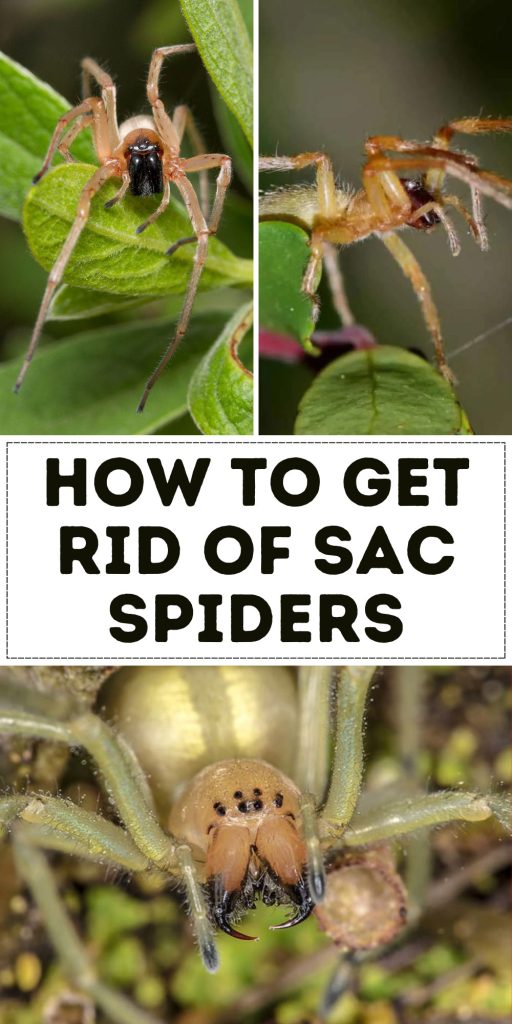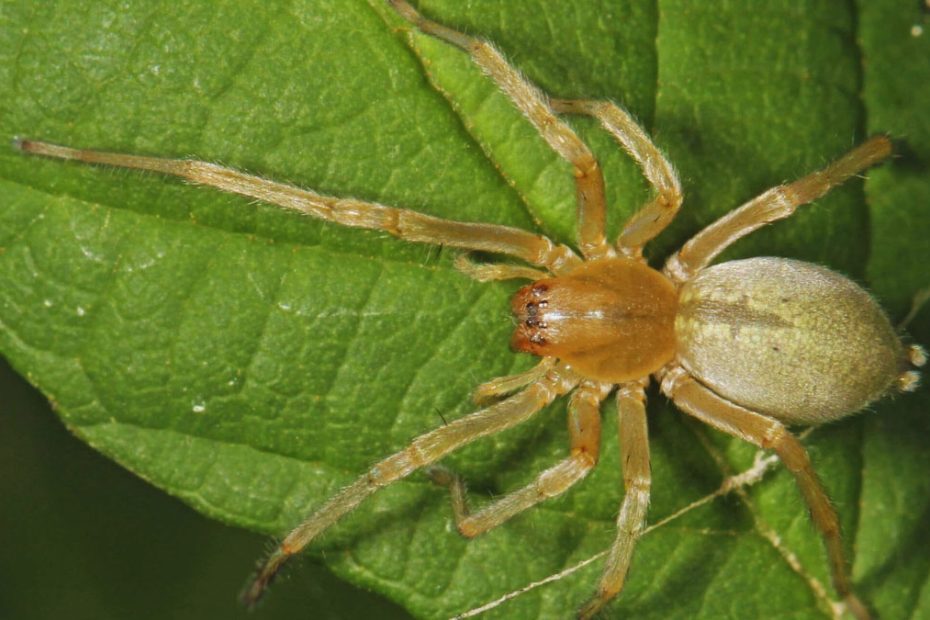Discovering sac spiders in your home can be unsettling, especially when you don’t know how to deal with them. These small, yellowish spiders are known for their painful bites and nocturnal habits. While they typically prefer outdoor environments, they can easily find their way inside, seeking shelter in corners, closets, and other quiet spaces.
You don’t have to live with these unwelcome guests. With the right strategies, you can effectively eliminate sac spiders from your home and prevent them from returning. In this guide, you’ll learn practical steps to identify, remove, and keep sac spiders at bay, ensuring a safer, spider-free environment.
Key Takeaways
- Understand Sac Spiders: Sac spiders are small, yellowish spiders known for their painful bites and nocturnal habits. They often enter homes in search of warmth and food.
- Identify Infestations: Look for sightings of sac spiders, silk sacs, bite marks, and egg sacs in hidden or quiet areas to identify infestations early.
- Implement Preventive Measures: Seal entry points, maintain cleanliness, and use natural remedies like essential oils to keep sac spiders at bay.
- Use Chemical Treatments: For severe infestations, use insecticides with active ingredients like pyrethroids or consider professional pest control services for effective management.
- Adopt Long-term Strategies: Conduct regular inspections and maintain a clean outdoor environment to consistently prevent sac spider infestations.

Understanding Sac Spiders
Sac spiders often enter homes in search of warmth and food, causing concern due to their bites and nesting habits. Learn more about these spiders to effectively get rid of them.
What Are Sac Spiders?
Sac spiders belong to the family Clubionidae and are known for creating silk sacs where they rest during the day.
- Appearance: Light brown or yellowish with a distinct, elongated sac-like structure.
- Size: Typically 0.2 to 0.4 inches long.
- Behavior: Active hunters, often seen wandering at night, unlike web-building spiders.
- Bite: Although generally not dangerous, their bites can cause pain, redness, and swelling.
Identifying Sac Spider Infestations
To identify a sac spider infestation, look for the following indicators:
- Sightings: Spotting sac spiders indoors, especially at night.
- Silk Sacs: Finding small silk sacs in hidden or quiet areas like behind furniture or wall crevices.
- Bite Marks: Experiencing unexplained bites with symptoms such as redness and swelling.
- Egg Sacs: Discovering egg sacs in sheltered areas, often attached to surfaces.
Identifying these signs helps you take prompt action to control the infestation and protect your home.
Preventive Measures
Implementing preventive measures is crucial to keep sac spiders out of your home. By taking these actions, you can minimize the chances of encountering these pests.
Sealing Entry Points
Sac spiders often enter homes through small gaps and cracks. To block their entry, regular inspections and timely sealing are essential.
- Inspect Windows and Doors: Check for gaps or cracks. Use weather-stripping and caulk to seal them.
- Repair Screen Meshes: Fix any holes in window and door screens to prevent spiders from sneaking in.
- Seal Cracks in Walls: Look for cracks in walls and foundations. Fill these with caulk or sealant.
- Check Utility Entry Points: Ensure that areas where cables, pipes, and wires enter your home are sealed properly.
Maintaining Cleanliness
A clean home discourages sac spiders from settling in. Regular cleaning and decluttering can make a significant difference in preventing infestations.
- Vacuum Regularly: Pay special attention to dark corners, under furniture, and behind appliances where spiders may hide.
- Declutter Storage Areas: Keep attics, basements, and garages tidy. Cardboard boxes and piles of clothes can become spider havens.
- Remove Webs and Sacs: Regularly remove spider webs, sacs, and egg sacs found in or around your home.
- Store Food Properly: Keep food in sealed containers to avoid attracting insects, which in turn attract spiders.
By sealing entry points and maintaining a high level of cleanliness, you can effectively reduce the chances of sac spiders invading your home.
Natural Remedies
Natural remedies offer effective options to manage sac spider infestations. These methods use environmentally friendly substances and can be safer around children and pets.
Essential Oils
Essential oils, known for their strong fragrances, can deter sac spiders.
- Peppermint Oil: Sac spiders dislike the strong scent of peppermint oil. Mix 10 drops of peppermint oil with water in a spray bottle and apply it to window sills, door frames, and dark corners.
- Lavender Oil: Known for its calming scent, lavender oil also repels sac spiders. Combine 10 drops with water and spray it in areas where spiders are spotted.
- Tea Tree Oil: This oil has potent antifungal and insecticidal properties. Prepare a similar mixture and spray it in hiding spots.
- Eucalyptus Oil: Its pleasant scent to humans is unattractive to spiders. Use it in the same dilution as peppermint oil.
Homemade Traps
Homemade traps can capture sac spiders and reduce their numbers.
- Sticky Traps: Use simple glue boards available at most stores. Place them near entry points and in dark corners to catch spiders.
- Jar Traps: An easy homemade option. Place a small piece of bait (like a piece of fruit) inside a jar. Smeared with petroleum jelly around the rim, spiders enter but can’t escape.
- Cardboard Traps: Create these by spreading double-sided tape on small cardboard pieces. Place the traps in areas suspected of spider activity.
Natural remedies provide an additional layer of protection against sac spiders, complementing preventive measures and ensuring a spider-free environment.
Chemical Treatments
Chemical treatments provide a reliable option for managing sac spider infestations. These methods are typically more effective for severe infestations or when natural remedies haven’t delivered desired results.
Insecticides
Insecticides are a common choice for controlling sac spiders. Here’s what you need to know:
- Types of Insecticides: Choose from aerosols, dusts, or liquid formulations.
- Application Areas: Spray insecticides in corners, cracks, baseboards, and other potential spider hideouts.
- Active Ingredients: Look for products containing pyrethroids, deltamethrin, or bifenthrin, as these ingredients are effective against spiders.
Steps to Apply Insecticides:
- Identify common entry points and hiding spots.
- Apply insecticide according to the manufacturer’s instructions.
- Cover treated areas to prevent re-entry.
Using insecticides effectively curtails sac spider populations promptly.
Professional Pest Control
For persistent infestations, professional pest control services offer an expert solution. Professional exterminators have access to advanced treatments and can provide ongoing monitoring.
Advantages of Professional Pest Control:
- Expertise: Technicians are trained to identify and treat infested areas comprehensively.
- Advanced Products: Professionals use commercial-grade insecticides that aren’t available to consumers.
- Customized Treatment Plans: Services tailored to your home’s specific needs ensure thorough coverage.
When to Contact a Professional:
- If DIY methods fail or the infestation persists.
- For large-scale infestations that are difficult to manage independently.
- When you want peace of mind with guaranteed results.
Professional pest control delivers a lasting solution for sac spider infestations, enabling you to maintain a spider-free home.
Long-term Strategies
For long-term control of sac spiders, consistent and proactive measures are key. By engaging in regular inspections and outdoor maintenance, you can significantly reduce the likelihood of an infestation.
Regular Inspection
Regular inspections help you identify and address potential spider issues before they become severe.
Inspection Frequency:
- Monthly Checks: Inspect your home monthly to detect early signs of infestation.
- Seasonal Audits: Conduct more thorough inspections at the start of each season to catch shifts in spider behavior.
Areas to Inspect:
- Windows and Doors: Look for cracks or gaps where spiders can enter.
- Attics and Basements: Check these dark, undisturbed areas where sac spiders often hide.
- Utility Entry Points: Examine where pipes, cables, and other utilities enter your home.
Inspection Tools:
- Flashlight: Use a flashlight to spot spiders in dark corners.
- Magnifying Glass: Enhance your inspection with a magnifying glass for better visibility of small cracks and spider sacs.
Outdoor Maintenance
Maintaining your outdoor environment can prevent sac spiders from entering your home in the first place.
Yard Upkeep:
- Trim Vegetation: Keep plants, shrubs, and trees trimmed and away from your home’s exterior walls.
- Clear Debris: Remove leaf piles, wood stacks, and other debris that offer shelter to spiders.
- Regular Mowing: Mow your lawn regularly to reduce hiding spots for spiders.
- Seal Cracks: Use caulk or sealant to fill cracks and gaps around the exterior of your home.
- Repair Screens: Ensure window and door screens are intact without holes.
- Install Door Sweeps: Add door sweeps to prevent spiders from slipping under doors.
By combining regular inspections with diligent outdoor maintenance, you create a comprehensive approach to long-term sac spider control. Consistency in these strategies will help maintain a spider-free environment.
Conclusion
Getting rid of sac spiders requires a mix of preventive measures, natural remedies, and sometimes chemical treatments. By sealing entry points and maintaining cleanliness, you can significantly reduce the chances of these spiders invading your home. Essential oils and homemade traps provide effective natural solutions, while insecticides offer a more robust approach for severe infestations.
If DIY methods aren’t enough, don’t hesitate to call professional pest control services for expert assistance. Regular inspections and diligent outdoor maintenance are crucial for long-term control. Combining these strategies will help you maintain a safer, spider-free environment.
Frequently Asked Questions
What are sac spiders?
Sac spiders are light brown or yellowish spiders known for their painful bites. They prefer dark, quiet spaces and are active hunters, often entering homes in search of warmth and food.
Are sac spider bites dangerous?
While sac spider bites are generally not dangerous, they can cause pain, redness, and swelling. In most cases, the symptoms subside without medical intervention.
How can I identify a sac spider infestation?
Key indicators of an infestation include sightings of spiders, silk sacs, bite marks, and egg sacs. Regular inspections of your home can help identify these signs early.
What are some preventive measures to keep sac spiders out of my home?
Seal entry points by inspecting and repairing windows, doors, and utility entry points. Fill cracks in walls, vacuum regularly, declutter storage areas, and properly store food to reduce the chances of an infestation.
Can natural remedies help manage sac spider infestations?
Yes, natural remedies like essential oils (peppermint, lavender, tea tree, eucalyptus) can deter sac spiders. Homemade traps such as sticky traps, jar traps, and cardboard traps can also capture and reduce spider populations.
What insecticides are effective against sac spiders?
Insecticides containing pyrethroids, deltamethrin, or bifenthrin are effective. Apply them to common spider entry points and hiding spots according to the product instructions for best results.
When should I contact professional pest control services?
Contact professionals if DIY methods fail, for large-scale infestations, or if you seek guaranteed results and peace of mind. They offer expertise, advanced products, and customized treatment plans.
What long-term strategies can help control sac spiders?
Regular monthly checks and seasonal audits of windows, doors, attics, basements, and utility entry points can identify potential spider issues early. Combining indoor inspections with outdoor maintenance like trimming vegetation and clearing debris forms a comprehensive approach to long-term control.
